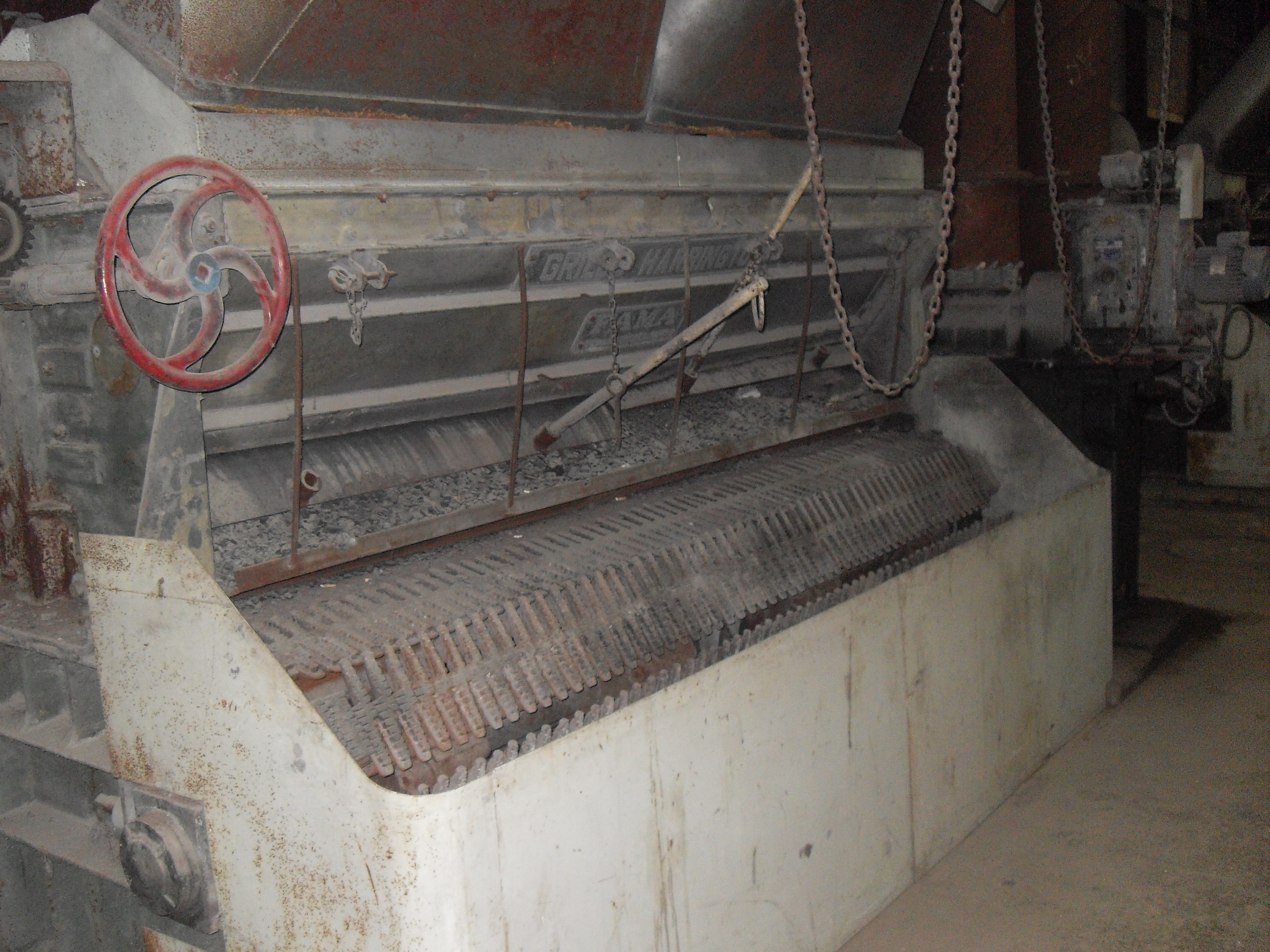Grate Firing on:
[Wikipedia]
[Google]
[Amazon]
Grate firing is a type of industrial combustion system used for
 ;Travelling grate
:A moving grate which is covered with a fuel layer, 10-30 cm. Power control by means of varying the grate velocity
;Reciprocating grate
:For ash-rich, low calorific fuels like municipal waste, arrangement of stationary and moving grates -> conveying and mixing (forward-moving type or reverse-action grate)
;Vibrating grate
:Water cooled membrane wall, with holes for air. For burning coal or wood.
;Travelling grate
:A moving grate which is covered with a fuel layer, 10-30 cm. Power control by means of varying the grate velocity
;Reciprocating grate
:For ash-rich, low calorific fuels like municipal waste, arrangement of stationary and moving grates -> conveying and mixing (forward-moving type or reverse-action grate)
;Vibrating grate
:Water cooled membrane wall, with holes for air. For burning coal or wood.
solid fuel
Solid fuel refers to various forms of solid material that can be burnt to release energy, providing heat and light through the process of combustion. Solid fuels can be contrasted with liquid fuels and gaseous fuels. Common examples of solid fuels ...
s. It now is used mainly for burning waste
Waste (or wastes) are unwanted or unusable materials. Waste is any substance discarded after primary use, or is worthless, defective and of no use. A by-product, by contrast is a joint product of relatively minor economic value. A waste prod ...
and biomass
Biomass is plant-based material used as a fuel for heat or electricity production. It can be in the form of wood, wood residues, energy crops, agricultural residues, and waste from industry, farms, and households. Some people use the terms bi ...
, but also for smaller coal
Coal is a combustible black or brownish-black sedimentary rock, formed as rock strata called coal seams. Coal is mostly carbon with variable amounts of other elements, chiefly hydrogen, sulfur, oxygen, and nitrogen.
Coal is formed when dea ...
furnaces.
* Capacities 0.3 to 175 MWth in industry and CHP
* Fuel fired per grate area 1-2 MW/m2, maximum grate area 100 m2
* Grates are typical only suitable for coarse particles, for fine particles a spreader is required, increases max. capacity
* Primary air through the grate (also used for cooling) and secondary air
Types
Grate area
The grate area is the area of the grate (length x width). The larger the grate area, the more fuel can be burned per hour. The amount of fuel burned also depends on the fuel or bed movement velocity.See also
* Fluidised bed firing * Pulverized fuel firing {{DEFAULTSORT:Grate Firing Energy conversion